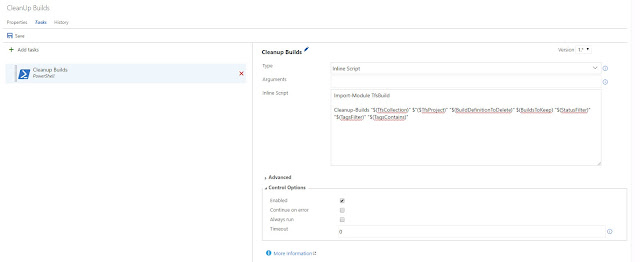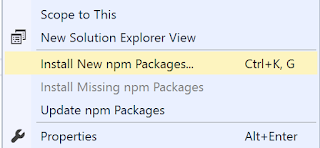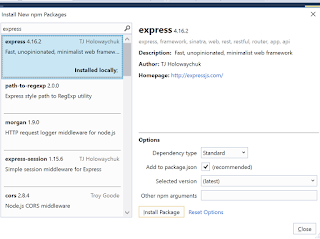One of the great announcements from this year's Microsoft Connect() conference was YAML support for VSTS build
definitions.
For
me, it's a great way forward towards "codifying" the build pipeline.
The current TFS builds technology, introduced in Team Foundation Server 2015,
despite all the benefits of a loose and extensible mechanism is rather
difficult to maintain as code and doesn't really fit "pipeline as a
code" definition. If you remember, earlier versions of Team Foundation
Server (TFS 2005 and TFS 2008) used an MSBuild file to run builds. Whilst this
was easy to code and maintain, extensibility was rather limited. Then, Team
Foundation Server 2010 introduced XAML builds with better support for workflows
but was difficult to work with. TFS 2015 simplifies XAML but the whole logic is
spread across different aspects of the build. Yaml solves this shortcoming
nicely.
Enable YAML Builds Preview Feature
At
the time of writing this post, support for YAML builds is still in preview in
VSTS. To enable it for your account, click on your profile and select option
"Preview Features" from the drop down menu
Select
option "from this account [projectName]".
Scroll down till you find the "Build Yaml definitions" feature and
set it to On
We are now ready to use YAML builds.
Creating a Yaml Build
There
are two ways in which we can set up a Yaml build.
1)
Create a file called .vsts-ci.yaml. When you push your change with this file to
TFS, a build definition, using this file is created for you.
2)
Explicitly create a build definition using the YAML template, providing the
path of YAML file that you have committed in the repo.
We
will go with option 2.
Create build.yml file
YAML
file format is the format of choice for configuration files and is used by some
exciting technologies like docker, Ansible, etc. It's great that VSTS now
supports it as well.
For
this demo, we are creating build for a simple .Net Web Application. For the
purpose of building our application, we need to do the following
1)
Restore all NuGet packages
2)
Build the entire solution
Our
very simple yaml file looks as below
steps:
- task: nugetrestore@1
displayName: NuGet Restore
inputs:
projects: "MyWebApplication.sln"
- task: MSBuild@1
displayName: Building solution
inputs:
command: build
projects: "MyWebApplication.sln"
The
file is pretty much self descriptive. As you can see we we have two tasks. The
first task uses nugetrestore passing the solution as input. The second task
executes MSBuild passing the applicatino's solution.
Commit
the file to your local Git Repo and push to commit to TFS.
Creating the Build definition
Now
that our yaml file is committed, we will create a build definition to use it.
To do this, click on the New button to create build definition. For the build
template, select YAML and click Apply
We
will then be asked to provide the build name, agent queue and path to Yaml
file. Make sure, you have selected the correct repository and branch in the
"Get Sources" option for the build definition.
Please
note that YAML builds are only supported for Git are not supported when TFVC is
used a version control repository.
Click
on the Triggers tab to make sure that Continuous Integration is selected as
option
Click
save to save your build. Now this build is set up as a continuous integration
build for your repository and is triggered with every commit.
Conclusion:
If
you compare the amount of work you had to do to create yaml build, it's really
a breeze as compare to TFSBuilds. There are many use cases of using YAML for
your build definitions. You can set up a complete pipeline, decoratively
executing each steps which can be developed and tested locally before being
used in VSTS.





